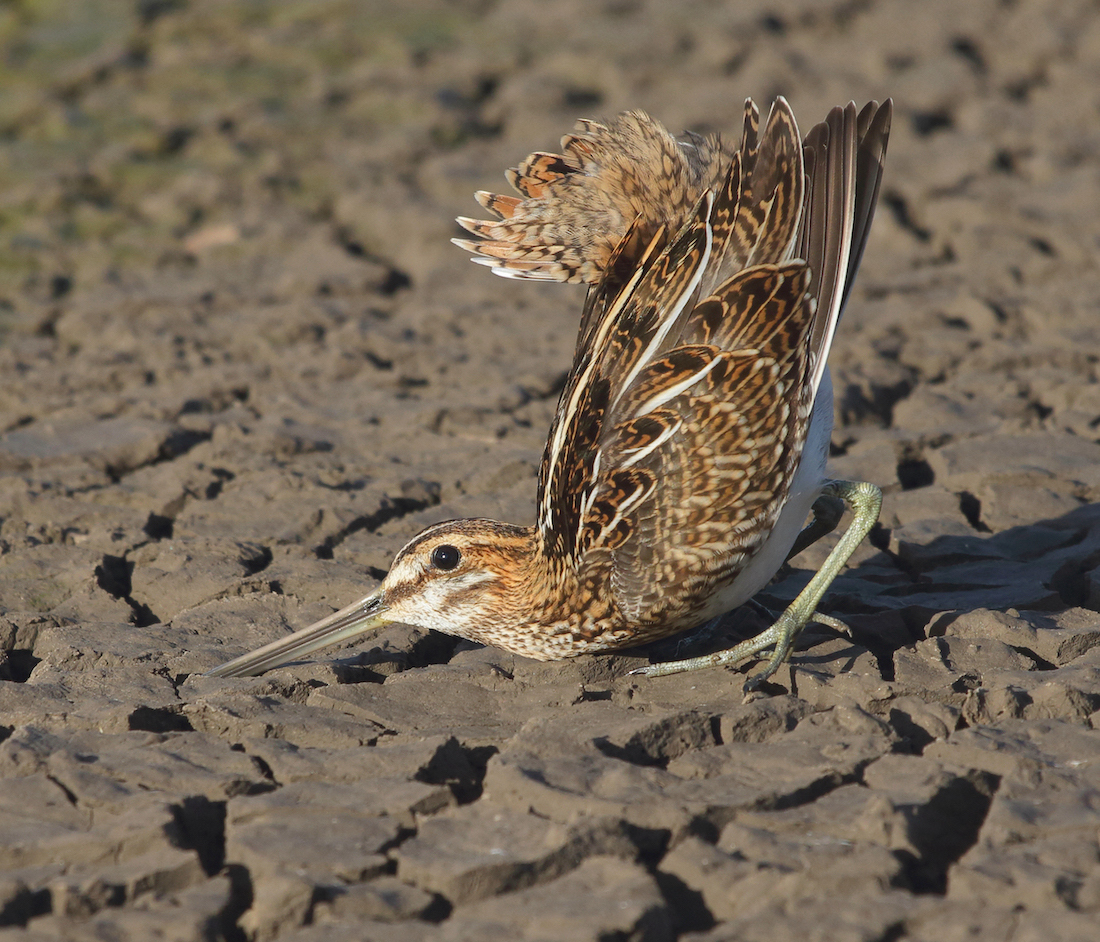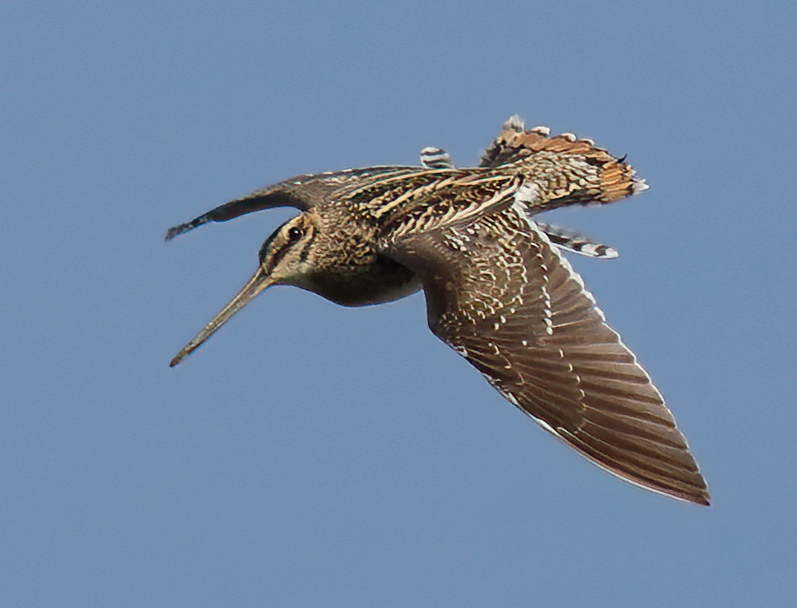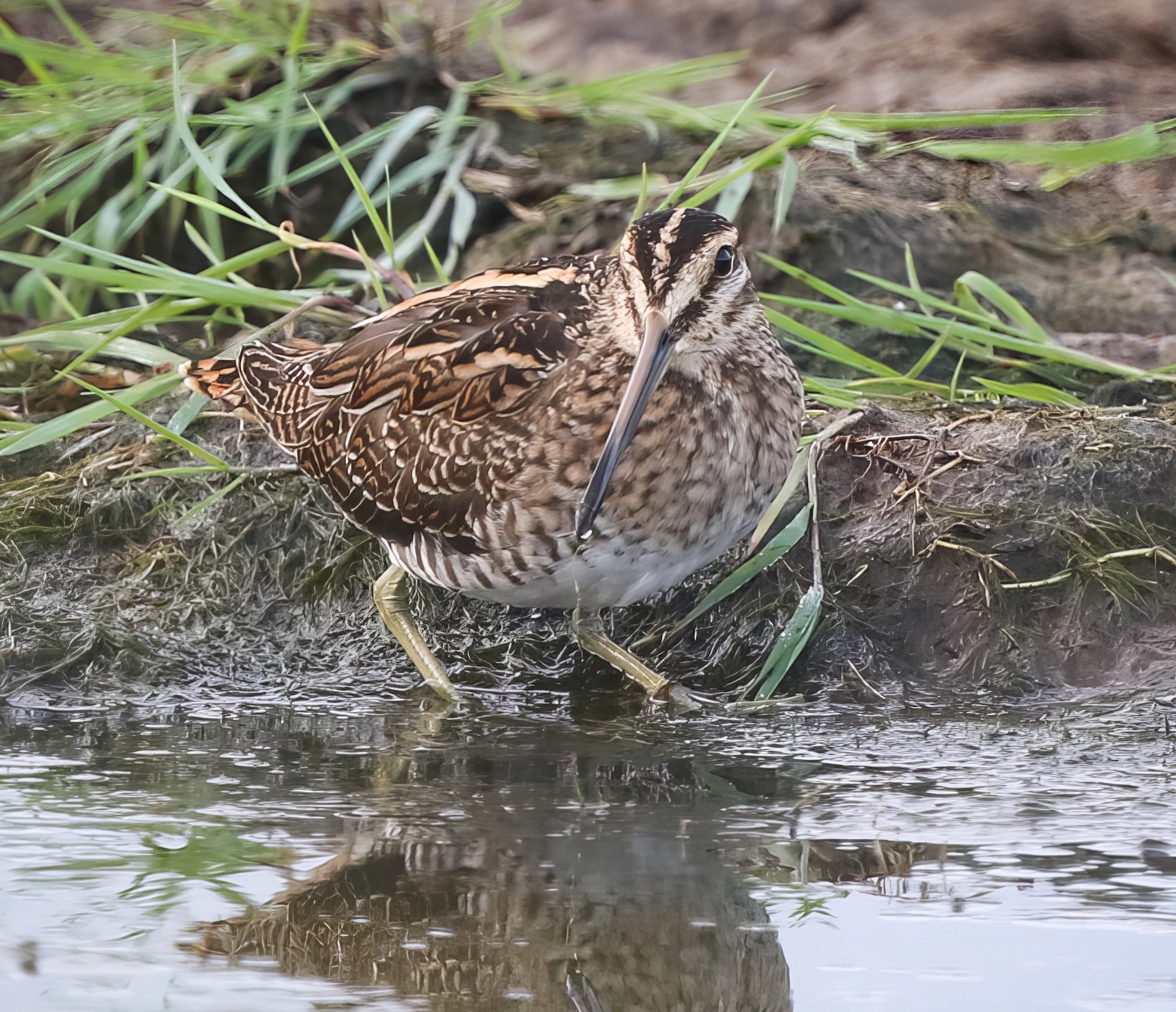Common snipe Gallinago gallinago
Scarce breeder, fairly common/common passage migrant and winter visitor.



Common Snipe has suffered a shocking decline as a breeding bird in Lincolnshire since the first BTO Atlas of 1968-1972 when it was a fairly widespread breeder in wet grassy areas throughout the county. As drainage intensified through the 1980s it went into a rapid decline such that by the end of the 1980s the Atlas reported there were an estimated 270 pairs and the Atlas map showed confirmed breeding in 19 10km squares. By the late 1990s the Atlas noted there were fewer than 15 drumming males. By the last BTO Atlas 2007-11 there was not a single instance of confirmed breeding in any Lincolnshire square and only a handful of squares had probable breeding. It is salutary to note that in the five years to 2018, LBR reported no instances of confirmed breeding and evidence of drumming from only four sites, Alkborough Flats, Blackmoor Bridge, Crowle Moors and Frampton Marsh. Common Snipe is less choosy about its wintering and migration habitat and being the most widespread wintering wader in Britain makes it difficult to get a handle on how many are passing through. In the five years to 2018 Alkborough Flats held all the highest peak monthly counts as reported in LBR as follows: winter 118 November 2017; spring 110 April 2015; autumn 264 October 2016.
(Account as per new Birds of Lincolnshire (2021), included September 2022)
